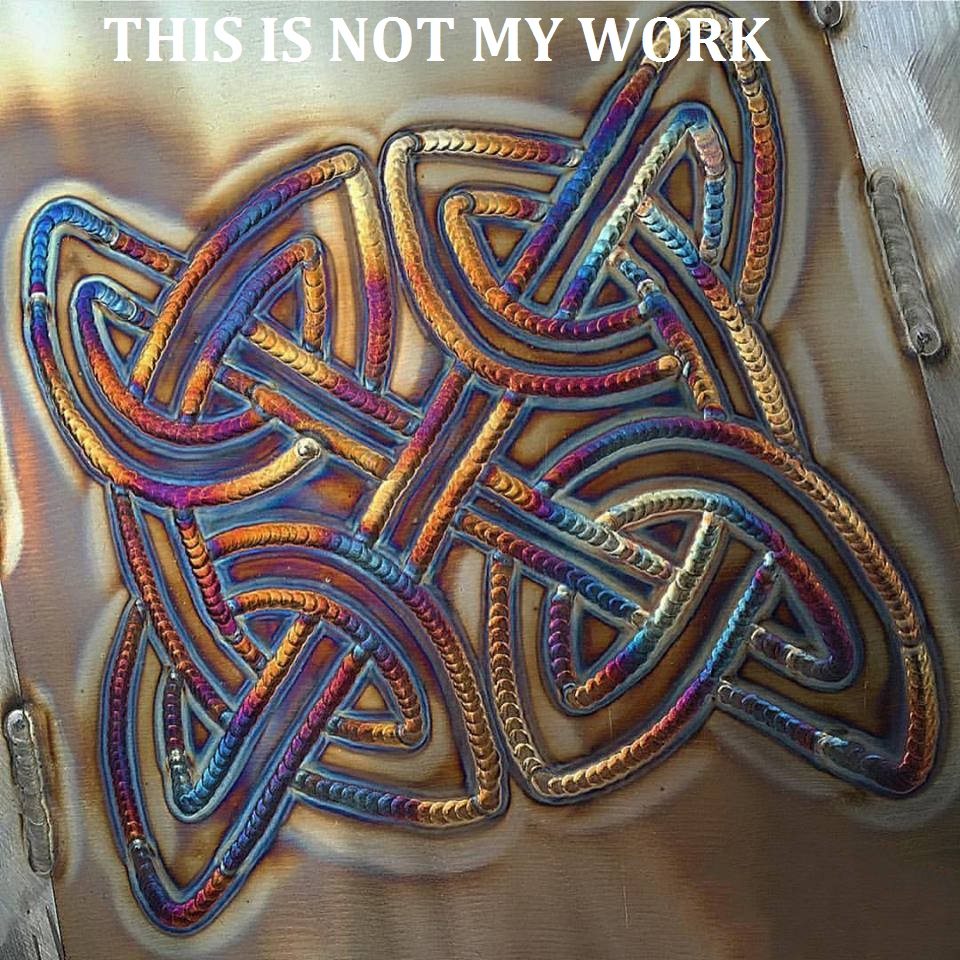
Absolutely beautiful welds
They are not machine-made!
Categories: Instruction and information
Word count/read time: 612 words; 3 minutes
Entire books are devoted to a miniscule aspect
of one category.
Taken out of context, one could easily dispute the generalizations.
Excluded are Mother Nature's tricks like galvanic or
oxidative welding. Even stranger, some metals will immediately
fuse together. Pure titanium is notorious for this.
Pure silver does so when red hot.
Hammer-forged metals, too - look at how
a traditional Japanese samurai sword is manufactured.
Though no metal is melted and no solder is used,
good luck separating the layers of metal.
In jewelry, soldering is technically brazing but no one quibbles about it.
The base metals are heated, not melted, until the solder liquefies and flows into the joint.
It is mostly for a localized area.
True brazing usually requires a torch and may cause heat-related
issues similar to welding. Brazing can be used on long stretches of metal
as easily as it can be localized for small spots.
Welding melts the base metals at the joining area.
Thanks to flux, shielding gases, and a clean surface, the metals will join together.
Most welding uses filler metal which is added to the molten
weld pool; welds without filler are called fusion welds.
High heat causes chemical or physical transformations: weak welds or
surrounding metal, annealing, brittleness, oxidation, porosity, metals coming out of alloy
or making new ones, oh my!
TIG and plasma are slower methods but
more versatile and harder to learn.
They consistently produce aerospace- and museum-quality
welds (sometimes laser welding does).
Plasma has a slight edge in overall performance
because the arc on TIG welding can wander. With TIG, electricity flows through an
electrode and
shielding gas to melt the metals. Plasma uses a stream of super-heated gas. Filler metal, if
used, is added as needed.
Laser welding is definitely Buck Rogers in the 25th Century. In theory, it should weld
just about as many metals as TIG or plasma. It can do fusion welds and is best for tiny areas
(but it can run beads, too).
MIG and arc are similar but the shielding agent is different. MIG uses gas, arc welding
uses flux. Secondary is how the filler material is
added. MIG welders have an automatic feed whereas arc welders have an electrode
that must be held in contact with the metal (the electrode is the filler metal). MIG is cleaner.
Arc welding can produce a solid weld but it's not as versatile.
Gas welding uses a flame and the burning gases can affect the base and filler metals.
Few unshielded alloys have the molecular stability
to tolerate high heat without throwing a nutty.
Fusion welds are possible on just a handful of metals,
notably pure silver and pure gold.
Resistance welding sends an electrical current through two or more touching pieces. The heat
created is enough to weld them together. It works great on steel alloys and takes virtually no training.
Metals with low electrical resistance (gold, silver, and others) cannot be welded this way.
Flux core (wire) welding shares similarities to the MIG, arc, and soldering. The solder or flux
is contained within the feeder wire. Because
it uses an actual physical substance as opposed to a shielding gas, it is like soldering.
The metal often dictates how it must be joined.
Sometimes dissimilar metals can be joined. Physical characteristics and chemical properties
make some metals notoriously difficult to weld.
Silver is among the most difficult because it has the highest
thermal and electrical conductivity and lowest electrical resistance.
Its melting and fusion-ready temperatures
are so close that it quickly turns into a molten blob. Nothing makes
jewelry as beautiful as pure silver so it's well worth the profanity
that often accompanies ambitious projects.
Posted by M: July 25, 2019
Please email any thoughts or comments regarding this post.
Comment Section
NOTE: Your comments will be included in this section
as long as they aren't illegal. This section is censor-free so show me
your intelligence or ignorance and everything in between!
|
2026
Review: Commarker Titan 1
Pesky Descriptors
Top Purchases 2025
2025
2024
2023
2022
2021
2020
2019
2018
2017
2016
2015
2014
|